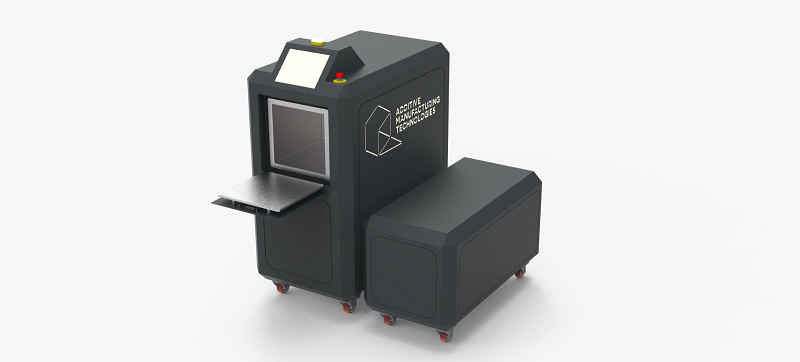AMT and Leering Hengelo launch PostProDP systems for automated de-powdering
Additive Manufacturing Technologies unveils integrated post-processing Digital Manufacturing System at Formnext 2019
TUM Purchases AMT’s PostPro3DMini for Post-Processing 3D Printed Medical Device Parts
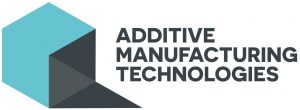 UK-headquartered Additive Manufacturing Technologies (AMT) is a vertically integrated technology development and manufacturing company that creates automated digital solutions to help its customers unlock the potential of industrial 3D printing. In 2017, when the company was founded, it introduced its PostPro3D commercial offering, which automatically smooths elastomeric and nylon 3D printed parts. The patent-pending technology, which was officially released last year, provides an automated and sustainable post-processing solution for high volume, production 3D printed parts, and works on all types of filament- and powder-based 3D printing methods.
UK-headquartered Additive Manufacturing Technologies (AMT) is a vertically integrated technology development and manufacturing company that creates automated digital solutions to help its customers unlock the potential of industrial 3D printing. In 2017, when the company was founded, it introduced its PostPro3D commercial offering, which automatically smooths elastomeric and nylon 3D printed parts. The patent-pending technology, which was officially released last year, provides an automated and sustainable post-processing solution for high volume, production 3D printed parts, and works on all types of filament- and powder-based 3D printing methods.
Now, AMT has announced the first sale of its new PostPro3DMini system, which was introduced to the market earlier this year. The Institute of Micro Technology and Medical Device Technology (MIMED) of the Technical University of Munich (TUM) confirmed that it has purchased one of AMT’s automated PostPro3DMini post-processing systems, which it plans on using to support its ongoing medical device research.
“We are really pleased to be working with the Mechanical Engineering department at TUM. This is a prestigious research institute that has been working on the progression of AM for many years. The fact that they have purchased the PostPro3DMini to support this research, and for such a demanding application in the medical device sector, is a real testament to the capabilities of the PostPro3D platform and how it can meet the demands for such applications that previously have not been met,” stated Joseph Crabtree, the CEO of AMT.
All of AMT’s post-processing systems are both UL- and CE-certified. The PostPro3DMini is based on the company’s proprietary, automated BLAST (Boundary Layer Automated Smoothing Technology) process, and offers all of the original PostPro3D’s advantages in a more compact unit. It’s a great size for design studios, research institutions, STEM programs, and smaller production runs, and is just as safe and sustainable for polymer 3D printed parts.
Speaking of safety and sustainability, AMT holds these as paramount to its philosophy, and so completed tests on EOS PA2200 3D printed parts processed with its PostPro3DMini. The results conform with all necessary cytotoxicity tests, in addition to skin irritation tests to normative references: ISO 10993-10 (2013), ISO 10993-1 (2018), and OECD TG 439.
The new PostPro3DMini system provides excellent smoothing and surface modification, which is able to achieve a surface quality that’s at least equal to injection molding for 3D printed polymer parts, if not even better. Rather than using water, the process uses a single, recyclable, non-toxic agent instead, and AMT’s automated post-processing hardware is well-suited for applications in medical devices.
 The ISO:13485-certified MIMED at TUM has embraced 3D printing as a viable development and production method for its continued research into new medical devices. That’s why the department was on the lookout for a commercially available system for post-processing when it discovered AMT’s PostPro3DMini.
The ISO:13485-certified MIMED at TUM has embraced 3D printing as a viable development and production method for its continued research into new medical devices. That’s why the department was on the lookout for a commercially available system for post-processing when it discovered AMT’s PostPro3DMini.
MIMED is currently developing individualized instruments for different medical applications using EOS PA2200 material; obviously, as this material is what was tested on the PostPro3DMini, the institute sees a lot of potential for the system. The PostPro3DMini will be integrated into MIMED’s 3D printing process for creating medical devices, in order for the institute to increase its range of SLS medical device parts.
Discuss this story and other 3D printing topics at 3DPrintBoard.com or share your thoughts in the Facebook comments below.
[Images: Additive Manufacturing Technologies]
The post TUM Purchases AMT’s PostPro3DMini for Post-Processing 3D Printed Medical Device Parts appeared first on 3DPrint.com | The Voice of 3D Printing / Additive Manufacturing.
Additive Manufacturing Technologies’ four pillars of sustainability
3D printing news Sliced: Modix, CRP Technology, OpenAdditive, Florida Makes, Polymaker
Additive Manufacturing Technologies to debut two new systems at RAPID + TCT 2019
3D Printing News Briefs: November 9, 2018
Buckle your seat belts, because we’ve got a of news to share with you in today’s 3D Printing News Briefs, starting with more event announcements and moving on to several new partnerships, a workshop, and a 3D printing project. Nanogrande introduced its new 3D printer for nanometer metallic particles at Fabtech this week, while Sartomer and Nanoe are launching new 3D printing innovations at formnext. Creatz3D is working to accelerate ceramics 3D printing in Singapore, while partnerships were announced between Valuechain and Clad Korea, PostProcess and Rösler, and Additive Manufacturing Technologies and Mitsubishi Electric. Finally, two Fraunhofer Institutes are hosting an AM materials workshop, and a maker from YouTube channel Potent Printables is sharing a new project.
Nanogrande Introduced First 3D Printer for Nanometer Metallic Particles
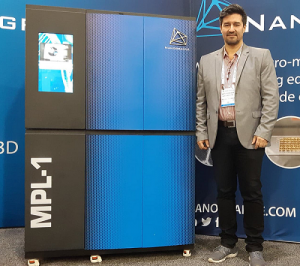 At FABTECH 2018 in Atlanta this week, Nanogrande officially introduced its new 3D printer. The MPL-1, enabled with the company’s Power Layering Technology, is actually the first nanoscale 3D printer for metallic particles in the world, and could successfully open up new 3D printing horizons. Nanogrande has spent years working to develop the new 3D printer.
At FABTECH 2018 in Atlanta this week, Nanogrande officially introduced its new 3D printer. The MPL-1, enabled with the company’s Power Layering Technology, is actually the first nanoscale 3D printer for metallic particles in the world, and could successfully open up new 3D printing horizons. Nanogrande has spent years working to develop the new 3D printer.
“Power Layering, while maximizing particle compaction, allows MPL-1 to use particles of all shapes, sizes and types. With this approach, we can easily print with particles as small as a nanometer, but also particles of 5 microns, what the industrial sector is currently seeking. At this size, the particles stick to each other, virtually eliminating the need for support structures typical to 3D printing. In this way, there is a considerable reduction in post- printing costs,” said Juan Schneider, the President and Founder of Nanogrande.
“Today we are witnessing the culmination of a long process of research and development that has given us the chance to set up a team that generates many innovative ideas. Alone, it is possible to have excellent ideas; but, as a team, we can bring these ideas to life. I am very pleased to highlight the success of the efforts of the people who work for Nanogrande.”
Sartomer Europe Introducing New UV-Curable Resins
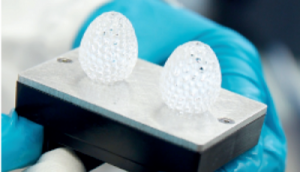 At formnext in Frankfurt next week, the European division of specialty chemical supplier Sartomer, a business unit of Arkema, will be launching new products in its N3xtDimension line of UV-curable engineered resins as part of its new commercial 3D printing-dedicated platform. The new materials will help companies fulfill performance and regulatory requirements for multiple industrial applications, thanks to their excellent tunability and mechanical properties. At its booth H58 in Hall 3.1 at formnext, Sartomer will introduce N3D I-2105, with impact resistance for manufacturing functional parts; N3D-F2115, which can achieve varying levels of flexibility depending on post treatment; and N3D P-2125, which is perfect for prototyping with its homogeneous network and limited evolution of mechanical properties after post-curing is complete.
At formnext in Frankfurt next week, the European division of specialty chemical supplier Sartomer, a business unit of Arkema, will be launching new products in its N3xtDimension line of UV-curable engineered resins as part of its new commercial 3D printing-dedicated platform. The new materials will help companies fulfill performance and regulatory requirements for multiple industrial applications, thanks to their excellent tunability and mechanical properties. At its booth H58 in Hall 3.1 at formnext, Sartomer will introduce N3D I-2105, with impact resistance for manufacturing functional parts; N3D-F2115, which can achieve varying levels of flexibility depending on post treatment; and N3D P-2125, which is perfect for prototyping with its homogeneous network and limited evolution of mechanical properties after post-curing is complete.
“We are addressing the needs of demanding and innovative 3D printing markets by partnering with global leaders to deliver custom material solutions for end-use applications. Through our range of products and services dedicated to additive manufacturing, we are supporting the 3D printing sector as it grows and continues to develop new applications,” said Sumeet Jain, the Global Director for 3D Printing Business at Sartomer.
Nanoe Launches Ceramic and Metal 3D Printer
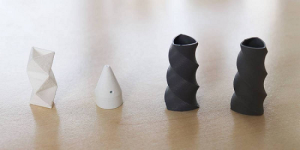 In other formnext news, French company Nanoe, which is a leader in high-tech raw materials and also specializes in ceramics 3D printing, will be introducing its new Zetaprint system for desktop 3D printing of ceramic and metal materials. The team will perform a live demonstration of the 3D printer at the event, and explain the full 3D printing, debinding, and sintering process.
In other formnext news, French company Nanoe, which is a leader in high-tech raw materials and also specializes in ceramics 3D printing, will be introducing its new Zetaprint system for desktop 3D printing of ceramic and metal materials. The team will perform a live demonstration of the 3D printer at the event, and explain the full 3D printing, debinding, and sintering process.
Additionally, the company will be launching its new stainless steel 16L Zetamix filament. These filaments, made up of a ceramic or metal powder and a polymer matrix, can be used to make high density parts in any FDM 3D printer. Nanoe, which is also developing materials in Inconel and titanium, will also soon be launching a complete line of adapted FDM 3D printers. Visit the company at booth A74 in Hall 3.0 next week at formnext to see a live Zetaprint demonstration and 3D printed parts in various Zetamix materials.
Creatz3D Accelerating Ceramics 3D Printing in Singapore
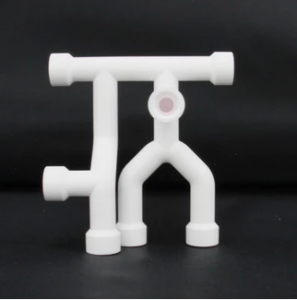 Speaking of ceramics, Creatz3D Ceramics Service Bureau is dedicated to 3D printing ceramics parts. Founded last year, its parent company is Singapore-based 3D printer and AM software solutions seller Creatz3D, which partnered with 3DCeram Sinto in Limoges to create the service. This partnership, signed in 2016, facilitated the first installation in Singapore of 3DCeram Sinto’s Ceramaker 900 Ceramic 3D printer, at the Advanced Remanufacturing Technology Centre. The Creatz3D Ceramics Service Bureau, which offers diverse material options and a hassle-free experience, is the first, and only, ceramics-focused 3D printing service in the country, and is helping to increase awareness and adoption of ceramics for 3D printing.
Speaking of ceramics, Creatz3D Ceramics Service Bureau is dedicated to 3D printing ceramics parts. Founded last year, its parent company is Singapore-based 3D printer and AM software solutions seller Creatz3D, which partnered with 3DCeram Sinto in Limoges to create the service. This partnership, signed in 2016, facilitated the first installation in Singapore of 3DCeram Sinto’s Ceramaker 900 Ceramic 3D printer, at the Advanced Remanufacturing Technology Centre. The Creatz3D Ceramics Service Bureau, which offers diverse material options and a hassle-free experience, is the first, and only, ceramics-focused 3D printing service in the country, and is helping to increase awareness and adoption of ceramics for 3D printing.
“The addition of ceramics to Creatz3D’s portfolio ensures that they stay ahead of the pack in the competitive 3D printing landscape, and their expertise can demonstrate the game-changing capabilities that the technology has to offer to help advance design, engineering, and manufacturing,” said Sean Looi, the General Manager of Creatz3D.
Valuechain Signs Strategic Partnership with Clad Korea
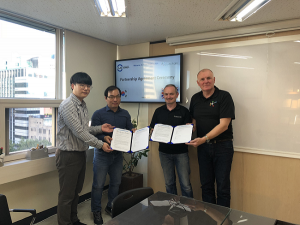 British technology company Valuechain reports that it has signed a strategic partnership with manufacturing company Clad Korea, in order to digitalize 3D printing in East Asia. Both companies will be able to grow their association together in the initial agreement, in addition to bringing Valuechain’s solutions, including its flagship DNA am production control software, to the East Asian AM marketplace. This software addresses 3D printing production process niche requirements, like powder traceability and managing AM build plans.
British technology company Valuechain reports that it has signed a strategic partnership with manufacturing company Clad Korea, in order to digitalize 3D printing in East Asia. Both companies will be able to grow their association together in the initial agreement, in addition to bringing Valuechain’s solutions, including its flagship DNA am production control software, to the East Asian AM marketplace. This software addresses 3D printing production process niche requirements, like powder traceability and managing AM build plans.
“Valuechain’s DNA am technology is a unique offering to the market, with great potential to enable rapid and mass production of additive manufactured parts. As we look to enter the additive manufacturing market ourselves, we believe this product will give us a competitive advantage in the industry, and we’re excited to be able to contribute to the growth of this technology in Asia by helping to deliver this solution throughout South Korea,” said Brandon Lee, the CEO of Clad Korea Co. Ltd.
PostProcess Technologies Partnering with Rösler
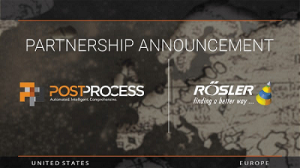 Moving on with strategic partnerships in the 3D printing world, PostProcess Technologies Inc., a pioneer of software-drive 3D post-processing solutions, is working with Rösler Oberflächentechnik GmbH, which sells finishing systems for traditional manufacturing, to bring automated, intelligent post-print solutions to Europe. Rösler will provide PostProcess’ data-driven support removal and surface finishing solutions for 3D printing to the European market, making it the only surface finishing supplier that will be providing solutions tailored to the needs of both traditional and additive manufacturing. The two companies will debut their partnership next week at formnext, with PostProcess’ technology on display in its booth H68, as well as Rösler’s booth E20, both of which are in Hall 3.0.
Moving on with strategic partnerships in the 3D printing world, PostProcess Technologies Inc., a pioneer of software-drive 3D post-processing solutions, is working with Rösler Oberflächentechnik GmbH, which sells finishing systems for traditional manufacturing, to bring automated, intelligent post-print solutions to Europe. Rösler will provide PostProcess’ data-driven support removal and surface finishing solutions for 3D printing to the European market, making it the only surface finishing supplier that will be providing solutions tailored to the needs of both traditional and additive manufacturing. The two companies will debut their partnership next week at formnext, with PostProcess’ technology on display in its booth H68, as well as Rösler’s booth E20, both of which are in Hall 3.0.
“The additive space is rapidly growing, especially in Europe, and as such, the demand for an automated post-printing solution is accelerating. Rösler is a unique partner for PostProcess, bringing expertise in finishing systems with a broad European footprint, thousands of existing customers, and a strong presence across a range of industries that will greatly benefit from PostProcess’ proprietary and integrated software, hardware, and chemistry solution,” said Bruno Bourguet, the Managing Director for PostProcess Technologies.
Additive Manufacturing Technologies Announces Partnership with Mitsubishi Electric
 Sheffield-based Additive Manufacturing Technologies Ltd (AMT) has entered into a partnership with Mitsubishi Electric in order to further develop its PostPro3D system with an integrated automation solution, which could provide a major productivity boost for 3D print post-processing. This new solution is based on Mitsubishi Electric’s MELSEC iQ-F Series compact PLC, HMIs, SCADA and MELFA articulated arm robots. While PostPro3D is already pretty impressive, with its ability to automatically smooth an object’s surface to 1μm precision, AMT wanted to further develop the system with certified automation products so it would be suitable for Industry 4.0. Now, PostPro3D is equipped with a Mitsubishi Electric power supply and low voltage switchgear, servo drives and motors, FR-D700 frequency inverters and the optional six-axis robot arm.
Sheffield-based Additive Manufacturing Technologies Ltd (AMT) has entered into a partnership with Mitsubishi Electric in order to further develop its PostPro3D system with an integrated automation solution, which could provide a major productivity boost for 3D print post-processing. This new solution is based on Mitsubishi Electric’s MELSEC iQ-F Series compact PLC, HMIs, SCADA and MELFA articulated arm robots. While PostPro3D is already pretty impressive, with its ability to automatically smooth an object’s surface to 1μm precision, AMT wanted to further develop the system with certified automation products so it would be suitable for Industry 4.0. Now, PostPro3D is equipped with a Mitsubishi Electric power supply and low voltage switchgear, servo drives and motors, FR-D700 frequency inverters and the optional six-axis robot arm.
“To realise our concept, we needed an automation partner that could provide the whole range of machine control systems, as well as the actual robotics. This is fundamental to truly integrate our machine into the production line of the future as well as to benefit from a lean, single vendor distribution model,” explained Joseph Crabtree, CEO at AMT.
“Mitsubishi Electric was the clear choice because it offers a one stop shop for state-of-the-art automation solutions. In this way, we can be sure that the different components are compatible and can share data. Overall, the company can offer us products that adhere to UL, CE as well as Industry 4.0 requirements.”
Fraunhofer AM Materials Workshop
 On November 29 and 30 in Dresden, Germany, Fraunhofer IKTS and Fraunhofer IWS are holding a workshop called “Hybrid materials and additive manufacturing processes.” The two institutes are working together to organize the workshop, which will be held in English and discuss innovative technologies for 3D printing metallic and ceramic components, in addition to application-specific manufacturing of material hybrids. Participants in the workshop’s practical insight sessions will be able to see diverse AM devices for multimaterial approaches live and in action.
On November 29 and 30 in Dresden, Germany, Fraunhofer IKTS and Fraunhofer IWS are holding a workshop called “Hybrid materials and additive manufacturing processes.” The two institutes are working together to organize the workshop, which will be held in English and discuss innovative technologies for 3D printing metallic and ceramic components, in addition to application-specific manufacturing of material hybrids. Participants in the workshop’s practical insight sessions will be able to see diverse AM devices for multimaterial approaches live and in action.
“Why is that interesting? Additive manufacturing technologies for material hybrids open up new possibilities in production for diverse industrial branches,” Annika Ballin, Press and Public Relations for Fraunhofer IKTS, told 3DPrint.com. “It is not only possible to realize complex geometries, but also to functionalize components (sensors, heaters), to individualize production (labeling, inscriptions) and to combine different materials properties in one component (conductive/insulating, dense/porous etc.).”
The workshop, which costs €750, will be held at Fraunhofer Institute Center Dresden, and registration will continue until November 22.
DIY 3D Printed Linear Servo Actuators by Potent Printables
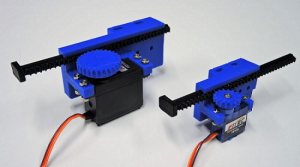 A maker named Ali, who runs the Potent Printables YouTube channel, recently completed a neat design project – 3D printed linear actuators. Ali, who was partly inspired by a Hackaday post, said that the project has received a great response on both Twitter and Instagram. He designed the parts in SOLIDWORKS, and controls them with an Arduino Uno. The simple rack-and-pinion design, perfect for light loads, comes in two sizes for different space constraints and force outputs.
A maker named Ali, who runs the Potent Printables YouTube channel, recently completed a neat design project – 3D printed linear actuators. Ali, who was partly inspired by a Hackaday post, said that the project has received a great response on both Twitter and Instagram. He designed the parts in SOLIDWORKS, and controls them with an Arduino Uno. The simple rack-and-pinion design, perfect for light loads, comes in two sizes for different space constraints and force outputs.
“Each design has a pinion that has to be glued to a servo horn, and a selection of rack lengths to suit your needs,” Dan Maloney wrote in a new Hackaday post about Ali’s project. “The printed parts are nothing fancy, but seem to have material in the right places to bear the loads these actuators will encounter.”
Check out the video below to see the 3D printed linear actuators for yourself:
AMT Announces Official Release of PostPro3D Automated Post-Processing System
 No one particularly enjoys post-processing after 3D printing a part, but there are technologies that make it easier, and that’s the specialty of English company Additive Manufacturing Technologies (AMT). Last year the company introduced its PostPro3D technology, which automatically smooths elastomeric and nylon 3D printed parts. AMT describes the technology as the “unlocking step” for 3D printing, eliminating costly, time-consuming manual post-processing measures. Over the past 18 months the company has worked with several development partners in industries including footwear, medical, automotive and aerospace to test PostPro3D, and the process has been tested on parts produced by all major 3D printers.
No one particularly enjoys post-processing after 3D printing a part, but there are technologies that make it easier, and that’s the specialty of English company Additive Manufacturing Technologies (AMT). Last year the company introduced its PostPro3D technology, which automatically smooths elastomeric and nylon 3D printed parts. AMT describes the technology as the “unlocking step” for 3D printing, eliminating costly, time-consuming manual post-processing measures. Over the past 18 months the company has worked with several development partners in industries including footwear, medical, automotive and aerospace to test PostPro3D, and the process has been tested on parts produced by all major 3D printers.
Every part finished with PostPro3D has been thoroughly tested for the requirements of the end use application. The technology has now been officially commercially launched, and is being incorporated into the digital workflows of AMT’s development partners for high volume manufacturing. The process has been UL and CE approved, and parts can be certified for medical use if required. The system will cost about €75,000 subject to customer requirements. It can be ordered now, with a delivery date estimated for the fourth quarter of 2018.
PostPro3D technology is based on AMT’s BLAST (Boundary Layer Automated Smoothing Technology) and works on all types of filament- and powder-based 3D printing methods. It uses a proprietary consumable blend, and the process, consumables and hardware have all undergone rigorous testing. The process can be adapted to different 3D printing materials. For example, AMT has worked with HP to develop specific processing for Nylon Multi Jet Fusion parts. The total processing time is between 90 and 120 minutes and the largest part that can be processed is 600 x 400 x 400 mm.
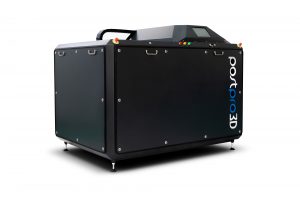 AMT has also announced the launch of what it is calling “PostPro3D as a service,” based out of the company’s Sheffield, England facilities. Customers are offered 24-hour-turnaround service for automated depowdering and smoothing of parts. Pricing is based on part volume.
AMT has also announced the launch of what it is calling “PostPro3D as a service,” based out of the company’s Sheffield, England facilities. Customers are offered 24-hour-turnaround service for automated depowdering and smoothing of parts. Pricing is based on part volume.
“After 18 months of development and testing we are delighted to announce the launch of PostPro3D,” said Joseph Crabtree, AMT CEO. “Our machine makes part surface finishing cost and speed competitive for high volume production – we welcome an opportunity to show customers the cost savings of adopting our technology. In addition to unveiling PostPro3D we are announcing the opening of a part processing service in our Sheffield facilities. This will offer potential customers to try the technology before they buy, or if they have a lower volume of parts to process.”
AMT will be demonstrating the PostPro3D technology at formnext, which is taking place from November 13th to 16th in Frankfurt, Germany. The company will also be speaking at the 3D Printing Post-Processing Conference and AM Integrated Factory Conference, which are taking place concurrently on December 4th in Sittard-Geleen, the Netherlands.
Discuss this and other 3D printing topics at 3DPrintBoard.com or share your thoughts below.
[Images: AMT]

